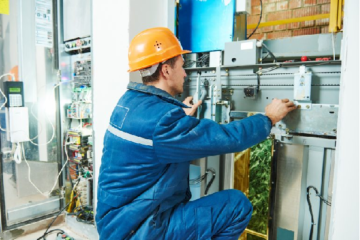
These are the most common reasons companies fail their emergency lighting inspections.
Passing emergency lighting inspections is vital for any business. It means that people inside your building can get out safely in the event of an emergency. However, many companies run into problems while trying to pass these inspections. These are the most common reasons companies fail their emergency lighting inspections.
Emergency Lighting Isn’t Fed From the Same Circuit as the Rest of the Lighting
Emergency lighting has to draw energy from the same circuit as your normal lighting. This is because your emergency lighting triggers only when your normal lighting supply fails you. If your emergency lights aren’t on the same circuit, your building will be left shrouded in darkness when your normal lights go out. Every building should have emergency lights that trigger once normal lighting goes out, allowing people up to 90 minutes to evacuate the building.
Emergency Lighting That Doesn’t Use Battery Power After the Circuit Breaker Gets Turned Off
This is a standard practice for businesses. Any emergency lights that are installed around the building have to function using battery power any time the circuit breaker that supplies them gets turned off. Oftentimes, these lights get shipped with backup batteries that are unplugged. If the lights don’t have their backup batteries equipped, but they are energized through an emergency panel that is supplied by a backup energy source, your lights should still turn on inside of ten seconds once your normal lights fail.
You Have the Wrong Type of Emergency Lighting
This is a fairly easy problem to correct. Always follow whatever lighting plans your business has. If the plans call for two exit signs, install them. If you need ten emergency lights, purchase them, and have them installed. Being proactive is the best way to dodge problems down the road. If you try to fix these issues last minute, you could have a lower quality of lighting.
Your Lights Only Operate on One Lamp Once the Circuit Gets Turned Off
Your lights have to be arranged in such a manner so that when one lamp fails, that area can still be illuminated. Usually, plans will be in place, showing a dual-lamp fixture that serves as the primary lighting source whenever your power is on, and it doubles as your emergency lighting whenever power goes down.
Problems take place once the emergency ballast is made to only light up one of these lamps when the power goes down.
Check Out Our Services From CMI Lighting
With over 35 years in the industry, CMI has an array of equipment to handle the logistics of any in-house job. We also frequently provide solutions to property managers and upcoming developments. CMI Companies provides services in Mid-Atlantic Region and proudly serves clients in Northern Virginia, Maryland, Richmond, Southern Virginia, Manassas, Prince William County, Fairfax County, Rockville, and Prince George’s County. Also, check us out on Facebook, Twitter, and LinkedIn.
